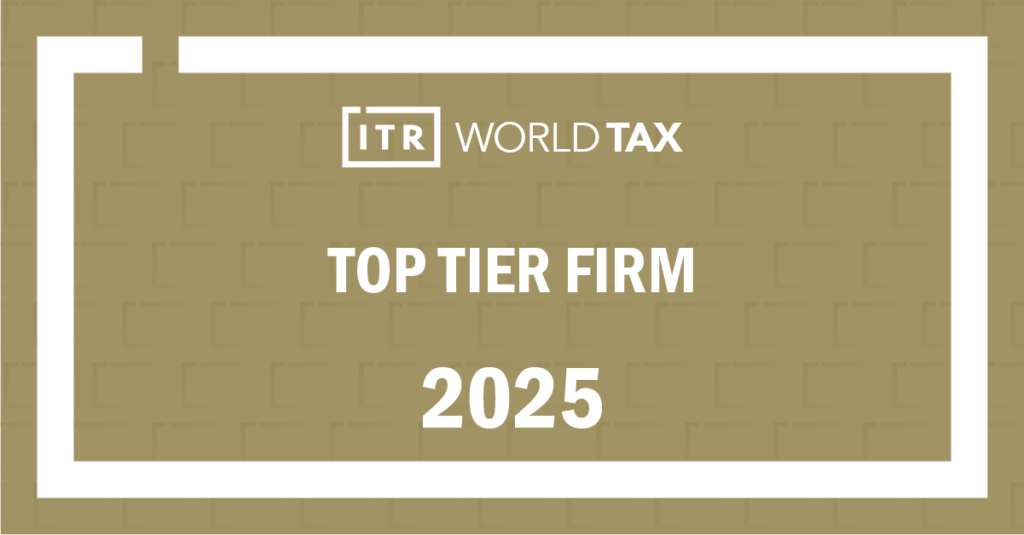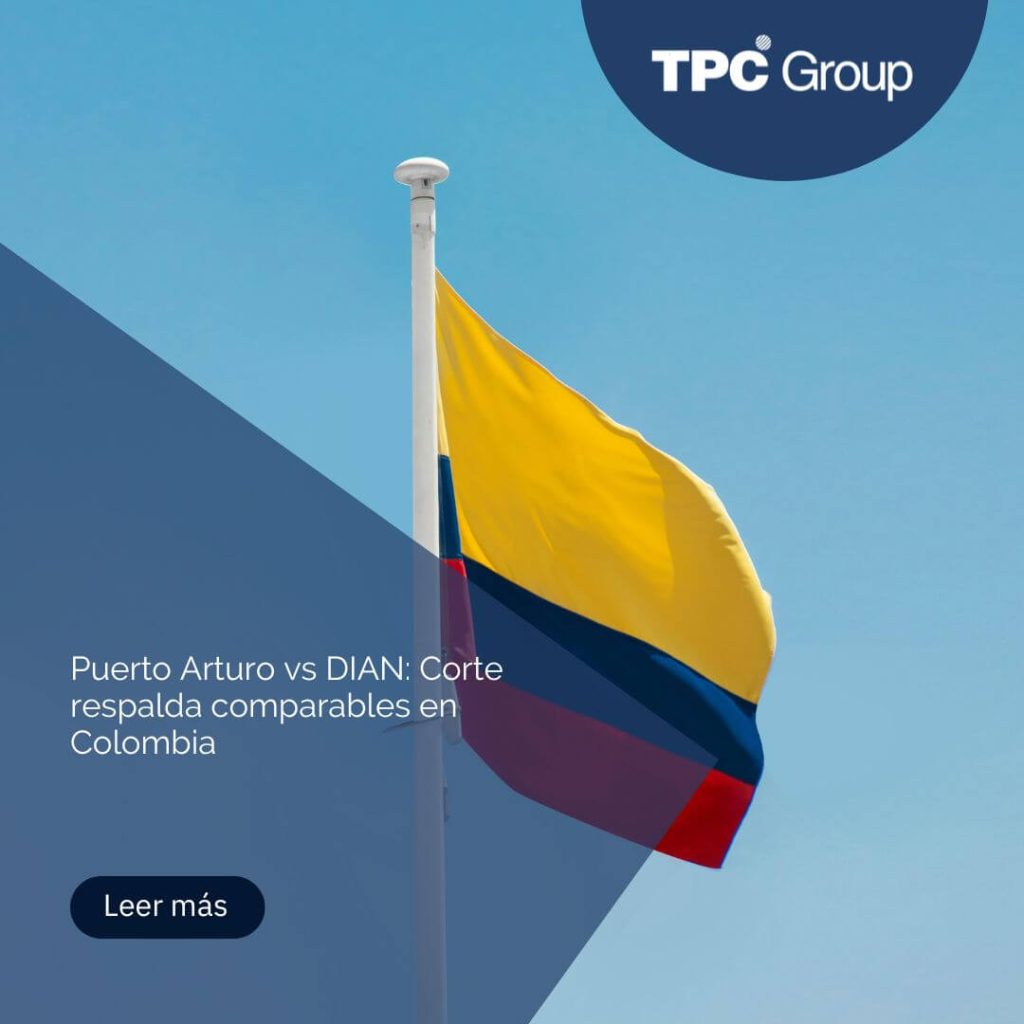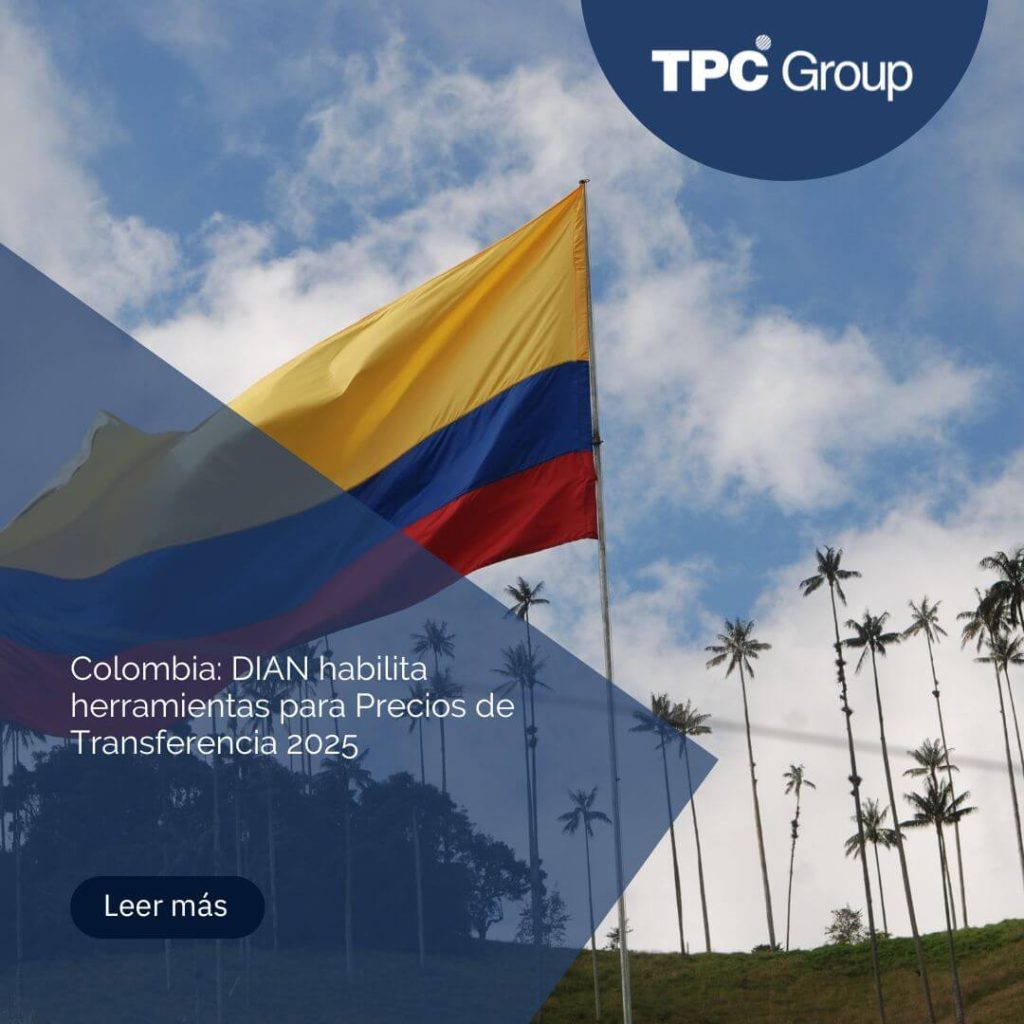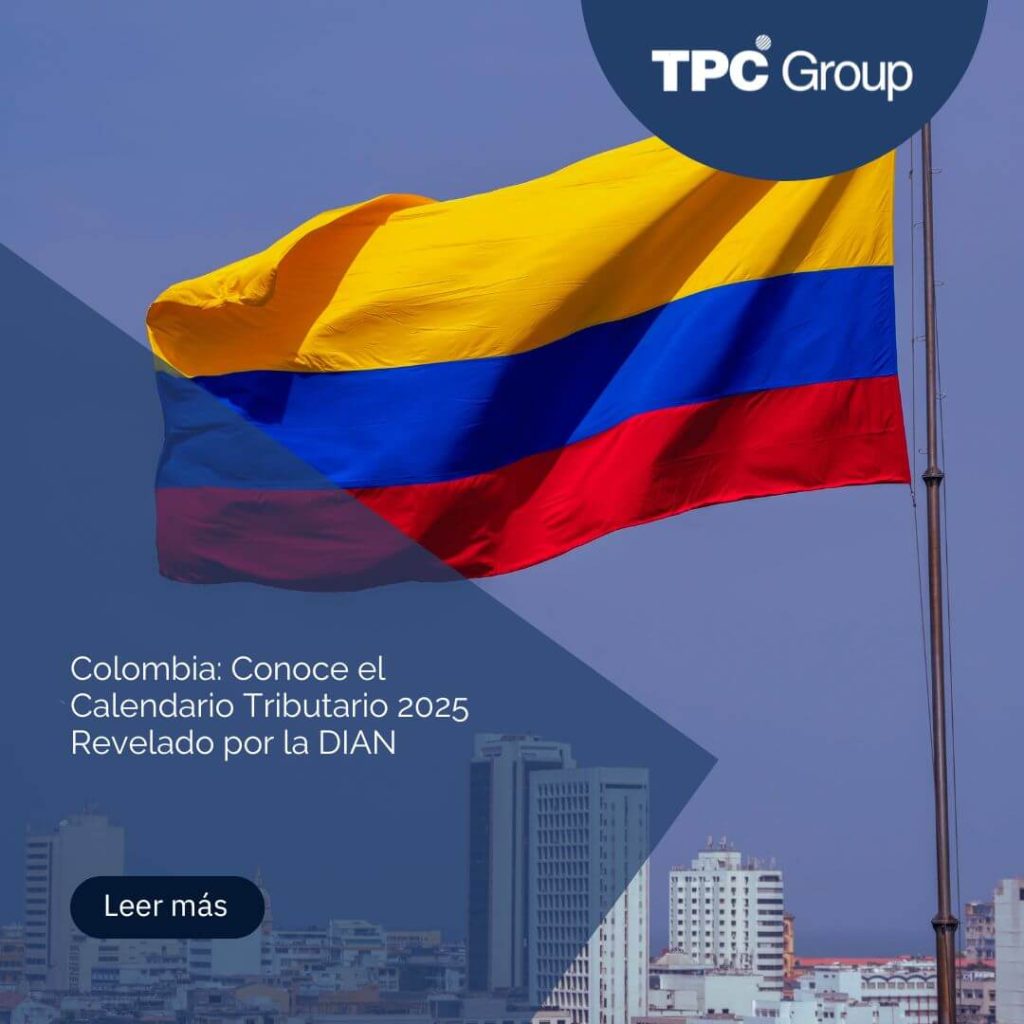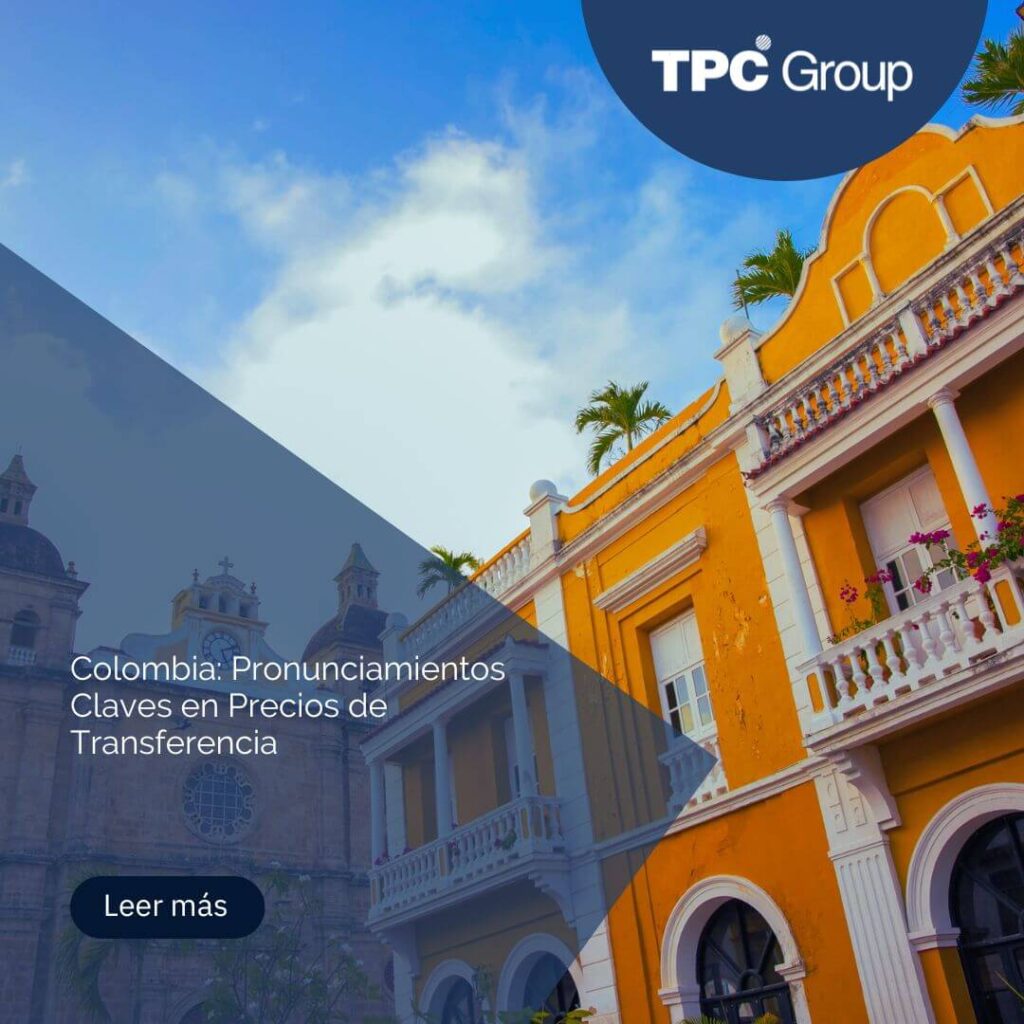Régimen tributario y leyes de precios de transferencia en Colombia
¿Cuál es la normativa de precios de transferencia en Colombia?
Los Precios de Transferencia en Colombia se crean con la Ley Nº 788 del año 2002. Sin embargo, su marco jurídico fue introducido mediante Decreto Nº 4349. Años después, en el 2013, se realizan cambios sustanciales en normatividad de precios de transferencia, siendo uno de ellos las vinculadas a las obligaciones formales, tales como: la presentación de la declaración jurada informativa y la conservación de la debida documentación probatoria.
Posterior a ello, Colombia con el propósito de adecuarse a las acciones del plan BEPS (Base Erosion and Profit Shifting) de la Organización para la Cooperación y Desarrollo Económico (OCDE), continuó realizando reformas al régimen de precios de transferencia antes señalado, enfocándose a través de la publicación de la Ley Nº 1819, en la lucha contra la elusión o evasión fiscal.
En el 2015, la DIAN, publicó la «Guía que facilita el conocimiento en el Régimen de Precios de Transferencia«, el cual resume en tres capítulos la legislación aplicable a la materia de precios de transferencia.
Como resultado de la adopción de las recomendaciones del Informe de la Acción BEPS 13 de la OCDE, incorporado en las Directrices de Precios de Transferencia de la OCDE publicadas en 2017, las empresas multinacionales se encuentran obligadas a presentar la Documentación Comprobatoria: el Informe Maestro -Precios de Transferencia (Master File).
Adicionalmente, las multinacionales, cuya última controlante sea residente fiscal en Colombia y tengan ingresos globales de 81 millones de UVT o más, deben presentar el Informe País por País (Country-by-Country Report).
Principio de Plena Competencia
El Principio de Plena Competencia o «Arm’s Length» se basa en que los precios, que se pactan entre partes relacionadas o vinculadas, deben ser considerados a valor del mercado. Esto significa que los mismos deben encontrarse a valores con los que se hubiesen pactado entre partes independientes y/o terceros independientes.
Siendo así, en el Artículo 260-2 del Estatuto Tributario, se plasma el Principio de Plena Competencia, definiéndolo como aquel principio que se cumple cuando en una transacción entre relacionados, se hubieran pactado las mismas condiciones que en una transacción con o entre partes independientes.
Escenarios de aplicación de los Precios de Transferencia en Colombia
A través del Artículo 260-2 del Estatuto Tributario, en Colombia se regulan las transacciones que realicen personas, sociedad o entidades ubicadas o residentes en territorio colombiano con partes relacionadas del exterior o aquellas relacionadas domiciliadas en zona franca. No solo estarán sometidos al cumplimiento de precios de transferencia, las partes antes señaladas, sino también las operaciones que realicen los contribuyentes desde, hacia o a través de paraísos fiscales y/o territorios de baja o nula imposición tributaria.
Partes Vinculadas: Criterios de vinculación de precios de transferencia
La normativa tributaria, señala diversos criterios a efectos de considerar cuando nos encontramos ante partes vinculadas. Respecto del impuesto sobre la renta y complementarios, los criterios de vinculación podremos encontrarlos a continuación:
-
Subordinadas
- Una entidad será subordinada o controlada cuando su poder de decisión se encuentre sometido a la voluntad de otra u otras personas o entidades que serán su matriz o controlante, bien sea directamente, caso en el cual aquella se denominará filial, o con el concurso o por intermedio de las subordinadas de la matriz, en cuyo caso se llamará subsidiaria;
- Será subordinada una sociedad cuando se encuentre en uno o más de los siguientes casos:
- Cuando más del 50% de su capital pertenezca a la matriz, directamente o por intermedio o con el concurso de sus subordinadas, o de las subordinadas de estas. Para tal efecto, no se computarán las acciones con dividendo preferencial y sin derecho a voto;
- Cuando la matriz y las subordinadas tengan conjunta o separadamente el derecho de emitir los votos constitutivos de la mayoría mínima decisoria en la junta de socios o en la asamblea, o tengan el número de votos necesarios para elegir la mayoría de miembros de la junta directiva, si la hubiere;
- Cuando la matriz, directamente o por intermedio o con el concurso de las subordinadas, en razón de un acto o negocio con la sociedad controlada o con sus socios, ejerza influencia dominante en las decisiones de los órganos de administración de la sociedad;
- Igualmente habrá subordinación, cuando el control conforme a los supuestos previstos en el presente artículo, sea ejercido por una o varias personas naturales o jurídicas o entidades o esquemas de naturaleza no societario, bien sea directamente o por intermedio o con el concurso de entidades en las cuales esta posean más del cincuenta (50%) del capital o configuren la mayoría mínima para la toma de decisiones o ejerzan influencia dominante en la dirección o toma de decisiones de la entidad;
- Igualmente habrá subordinación cuando una misma persona natural o unas mismas personas naturales o jurídicas, o un mismo vehículo no societario o unos mismos vehículos no societarios, conjunta o separadamente, tengan derecho a percibir el cincuenta por ciento de las utilidades de la sociedad subordinada.
-
Sucursales, respecto de sus oficinas principales
-
Agencias, respecto de las sociedades a las que pertenezcan
-
Establecimientos permanentes, respecto de la empresa cuya actividad realizan en todo o en parte
-
Otros casos de Vinculación Económica
-
- a) Cuando la operación tiene lugar entre dos subordinadas de una misma matriz;
- b) Cuando la operación tiene lugar entre dos subordinadas que pertenezcan directa o indirectamente a una misma persona natural o jurídica o entidades o esquemas de naturaleza no societaria;
- c) Cuando la operación se lleva a cabo entre dos empresas en las cuales una misma persona natural o jurídica participa directa o indirectamente en la administración, el control o el capital de ambas. Una persona natural o jurídica puede participar directa o indirectamente en la administración, el control o el capital de otra cuando
- posea, directa o indirectamente, más del 50% del capital de esa empresa, o,
- tenga la capacidad de controlar las decisiones de negocio de la empresa;
- d) Cuando la operación tiene lugar entre dos empresas cuyo capital pertenezca directa o indirectamente en más del cincuenta por ciento (50%) a personas ligadas entre sí por matrimonio, o por parentesco hasta el segundo grado de consanguinidad o afinidad, o único civil;
- e) Cuando la operación se realice entre vinculados a través de terceros no vinculados;
- f) Cuando más del 50% de los ingresos brutos provengan de forma individual o conjunta de sus socios o accionistas, comuneros, asociados, suscriptores o similares;
- g) Cuando existan consorcios, uniones temporales, cuentas en participación, otras formas asociativas que no den origen a personas jurídicas y demás contratos de colaboración empresarial.
La vinculación se predica de todas las sociedades y vehículos o entidades no societarias que conforman el grupo, aunque su matriz esté domiciliada en el exterior.
-
Vinculados en zonas francas
-
Operaciones con jurisdicciones no cooperantes, de baja o nula imposición
-
Regímenes tributarios preferenciales
Territorios No Cooperantes, de Baja o Inexistente Imposición y Regímenes Tributarios Preferenciales en Colombia
El ordenamiento normativo tributario hace referencia a las Jurisdicciones no Cooperantes, de Baja o Nula Imposición, asignándoles a estas un tratamiento especial para los contribuyentes que realicen operaciones económicas en esos territorios. Siendo así, estos se darán bajo algunos aspectos:
- En comparación a las tasas impositivas de Colombia, son casi nulas o nulas.
- Una total falta de intercambio de información en materia impositiva, además de una carencia de transparencia a nivel legal. Es optativo la presencia local sustantiva.
Igualmente, será determinante para hablar regímenes tributarios preferenciales el cumplimiento de dos de los criterios anteriormente señalados.
Métodos de Precios de Transferencia en Colombia
La legislación colombiana, en el Artículo 630-3 del Estatuto Tributario, establece una totalidad de 6 métodos de precios de transferencia:
- Método de Precio Comparable no Controlado (MPCNC)
- Método de Precio de Reventa (MPR)
- Método del Costo Adicionado (MCA)
- Método de Márgenes Transaccionales de Utilidad de la Operación (MTU)
- Método de Partición de Utilidades (MPU)
El contribuyente de forma voluntaria, para cada operación tendrá la opción de elegir el método que más se acomode a sus intereses.
Criterios de Comparabilidad en Colombia
Cuando nos enfrentamos a una operación comparable. En tal caso se deberá tener en cuenta los siguientes aspectos:
- El detalle de las operaciones.
- Las funciones, pros y contra asumidos en las operaciones.
- Las condiciones de los acuerdos que den en buena cuenta la realidad económica.
- El contexto económico del mercado.
- Las alternativas del negocio.
Es preciso señalar que, ante comparables internos, estos deberán ser tratados en forma inmediata.
Documentación para declaración de precios de transferencia en Colombia
A continuación, se detallan los tipos de informes de precios de transferencia según la DIAN de Colombia:
Declaración Informativa (Formulario 120)
Definición
De acuerdo a la Guía que facilita el conocimiento en el Régimen de Precios de Transferencia de la DIAN_404 emitido por la DIAN:
Una declaración informativa es aquella mediante la cual los contribuyentes del impuesto sobre la renta y complementarios obligados a la aplicación de las normas que regulan el régimen de precios de transferencia y que cumplan con las condiciones para ser declarantes, ponen en conocimiento de la Dirección de Impuestos y Aduanas Nacionales las operaciones que realizaron durante el año gravable con vinculados del exterior, vinculados ubicados en Zonas Francas o con personas, sociedades, entidades o empresas ubicadas, residentes o domiciliadas en Paraísos Fiscales.
No es una declaración que conlleve el pago de tributo alguno, no obstante, su presentación tardía o inexacta o su no presentación pueden ocasionar el pago de las sanciones asociadas a tales hechos.
Obligados a presentar el Formulario 120
Las empresas que están obligadas a presentar la declaración informativa son aquellas que cumplan los siguientes requisitos:
- Ser contribuyente del impuesto a la renta durante el periodo fiscal.
- Haber celebrado operaciones con empresas vinculadas, empresas ubicadas en zonas francas, empresas en paraísos fiscales o países considerados no cooperantes.
- Tener un patrimonio bruto mayor a 100,000 UVT o ingresos brutos durante el periodo que superen las 61,000 UVT.
Estos requisitos antes mencionados están establecidos en los artículos 260-9, 260-1 y 260-2 del Estatuto Tributario.
- Información principal que debe contener la declaración
- Información necesaria para identificar al contribuyente
- Información para identificar a las vinculadas
- Información de los tipos de operaciones con sus montos respectivos.
- Información de la metodología empleada por cada transacción.
- Información financiera de la empresa analizada con su indicador de rentabilidad.
- Información sobre el cuartil hallado en el análisis.
- Información sobre los ajustes realizados.
Presentación de la declaración informativa
La declaración informativa deberá presentarse a través del formato 1125 también conocido como Prevalidador, el cual generará un archivo en formato xml. Este archivo se cargará a través de la DIAN y seguidamente se completará la segunda parte que el Formulario 120, en el cual se colocarán los datos adicionales solicitados.
Informe Local de Precios de Transferencia
Obligados a presentar informe local de precios de transferencia
Los requisitos para estar obligados a presentar la documentación comprobatoria son los siguientes:
- Cumplir con los requisitos para la presentación de la declaración informativa, mencionados líneas arriba.
- Haber realizado operaciones con vinculadas por un importe superior a 45,000 UVT, o alternativamente haber realizado operaciones con jurisdicciones no cooperantes por un importe mayor a 10,000 UVT
Información principal que debe contener el informe local de precios de transferencia en Colombia
El informe local de precios de transferencia deberá contener los datos consignados en la declaración informativa, pero con los sustentos de los montos de las operaciones, de los métodos empleados, de los ingresos de la compañía obligada y demás información funcional.
El contenido de la documentación comprobatoria, será el siguiente:
- Resumen Ejecutivo.
- Análisis Funcional.
- Análisis de Mercado.
- Análisis Económico.
Presentación de informe local de precios de transferencia
El informe se presentará a través de la DIAN, en formato PDF bajo el formato 1729. Esto es, cambiar el nombre del archivo a declarar y colocarlo de la siguiente manera: Dmuisca_ccmmmmmvvaaaacccccccc
Donde:
- cc : Concepto (Nuevo = 01)
- (Reemplazo = 02)
- mmmmm : Formato (Informe Loca) = 01729
- vv : Versión del formato (Versión = 07)
- aaaa : Año de envío = 2023
- cccccccc : Consecutivo de envío por año = 00000001
Informe Maestro de Precios de Transferencia
Obligados a presentar informe maestro de precios de transferencia
Los requisitos para estar obligados a presentar la documentación comprobatoria son los siguientes:
- Cumplir con los requisitos para la presentación del informe local de precios de transferencia , mencionados líneas arriba.
- Pertenecer a un grupo multinacional.
«… que pertenezcan a grupos multinacionales, entendidos como aquellos que conste de dos o más empresas cuya residencia fiscal se encuentre en jurisdicciones diferentes, o que esté compuesto por una empresa residente a efectos fiscales en una jurisdicción y que tribute en otra jurisdicción por las actividades realizadas a través de un establecimiento permanente»
Información principal que debe contener el informe maestro de precios de transferencia en Colombia
Este informe solicita a las empresas la información general del Grupo Multinacional al que pertenece la compañía objeto de análisis.
Presentación de informe maestro de precios de transferencia
El informe se presentará a través de la DIAN, en formato PDF bajo el formato 5231. Esto es, cambiar el nombre del archivo a declarar y colocarlo de la siguiente manera: Dmuisca_ccmmmmmvvaaaacccccccc
Donde:
- cc : Concepto (Nuevo = 01)
- (Reemplazo = 02)
- mmmmm : Formato (Informe Maestro) = 05231
- vv : Versión del formato (Versión = 01)
- aaaa : Año de envío = 2023
- cccccccc : Consecutivo de envío por año = 00000001
Informe País por País de Precios de Transferencia
A.¿Qué es el Reporte País por País (Country by Country – CbC)?
Es parte del Plan de Acción 13 de la iniciativa BEPS de la OCDE en donde las Matrices o Entidades Controladoras de un Grupo Multinacional deben presentar una Declaración Anual informativa llamada, Informe País por País, a través del cual se muestra información relativa a la asignación global de ingresos e impuestos pagados por el grupo multinacional, junto con ciertos indicadores relativos a su actividad económica a nivel global.
B. ¿Las empresas colombianas están sujetas a la Declaración de este Informe?
Sí, sujetas a ciertas condiciones según lo señalado en el artículo 1.2.2.2.3.3. del Decreto 1625 de 2016.
C. ¿Quiénes están obligados a la Declaración?
- Entidades Matrices o Controlantes de Grupos Multinacionales, entendiéndose como tales aquellas que reúnan los siguientes requisitos:Sean residentes en Colombia.
- 1.2. Tengan empresas filiales, subsidiarias, sucursales o establecimientos permanentes, que residan o se ubiquen en el extranjero, según sea el caso.
- 1.3. No sean subsidiarias de otra empresa ubicada en el territorio nacional o residente en el extranjero.
- 1.4. Estén obligadas a elaborar, presentar y revelar estados financieros consolidados.
- 1.5. Hayan obtenido en el año o periodo gravable inmediatamente anterior ingresos consolidados para efectos contables iguales o superiores a ochenta y un millones (81.000.000) Unidad de Valor Tributario (UVT).
- Entidades residentes en el territorio nacional o residentes en el extranjero con establecimiento permanente en el país, que hayan sido designadas por la entidad matriz o controlante del grupo multinacional residente en el extranjero como entidad sustituta de esta para presentar en nombre del Grupo Multinacional el Informe País por País a que se refiere esta Sección.
- Una o más entidades o establecimientos permanentes residentes o ubicados en el territorio nacional que pertenezcan a un mismo grupo multinacional, cuya entidad matriz o controlante resida o se ubique en el extranjero y que reúnan los siguientes requisitos:
- 3.1. Que de manera conjunta tengan una participación en los ingresos consolidados del grupo multinacional igual o mayor al veinte por ciento (20%).
- 3.2. Que la matriz no haya presentado en su país de residencia el Informe País por País al que se refiere el artículo 1.2.2.2.3.5 del presente decreto. Se entenderá que se trata de aquellos casos en los que se cumpla con una de las siguientes condiciones:
- 3.2.1. No exista un requerimiento legal obligando a la Entidad Matriz o Controlante del Grupo Multinacional a presentar el Informe País por País en su jurisdicción de residencia fiscal; o
- 3.2.2. La jurisdicción en la que la Entidad Matriz o Controlante resida para efectos fiscales tenga un «Acuerdo Internacional» vigente del cual Colombia sea parte, pero no tenga vigente un «Acuerdo Calificado entre Autoridades Competentes» del cual Colombia sea parte, en la fecha de presentación del Informe País por País para el Año Fiscal Informado; o
- 3.2.3. Exista un «Incumplimiento Sistemático» en la jurisdicción de residencia fiscal de la Entidad Matriz o Controlante que haya sido notificada por la Administración Tributaria de Colombia a la Entidad Integrante o Perteneciente al Grupo Multinacional que es residente para efectos fiscales en Colombia.
- 3.3. Que el grupo multinacional haya obtenido en el año o periodo gravable inmediatamente anterior ingresos consolidados para efectos contables iguales o superiores a ochenta y un millones (81.000.000) Unidad de Valor Tributario-UVT.
En caso de existir más de una entidad o establecimiento permanente del Grupo residentes en Colombia y cuando se cumplan los anteriores requisitos, será responsable de presentar el Informe País por País la entidad o establecimiento permanente que haya sido designado por el grupo multinacional, o en su defecto, la entidad o establecimiento permanente que posea el mayor patrimonio en Colombia a 31 de diciembre del año gravable al que corresponde el Informe País por País.
D. ¿En qué casos no aplica?
- a. Cuando el Grupo Multinacional, a través de una Entidad Sustituta, designada por éste, haya presentado ante la autoridad tributaria de la jurisdicción de su residencia fiscal el Informe País por País, a más tardar doce (12) meses contados a partir del último día del cierre fiscal del Grupo Multinacional al que corresponda el Informe País por País, siempre que se cumplan las siguientes condiciones:
- La jurisdicción de residencia fiscal de la Entidad Sustituta cuente con el requisito legal para la presentación del Informe País por País cumpliendo con los requisitos señalados en el artículo 1.2.2.2.3.5. del presente Decreto.
- La jurisdicción de residencia fiscal de la Entidad Sustituta cuente con un Acuerdo Calificado entre Autoridades Competentes vigente del cual Colombia sea parte en la fecha prevista para la presentación del Informe País por País.
- La jurisdicción de residencia fiscal de la Entidad Sustituta no haya notificado a la Administración Tributaria de Colombia un Incumplimiento Sistemático.
- La Administración Tributaria de la jurisdicción de residencia fiscal de la Entidad Sustituta haya sido notificada por la Entidad Integrante o Perteneciente al Grupo Multinacional residente para efectos fiscales en dicha jurisdicción de que ésta es la Entidad Sustituta; y
- La Entidad Integrante o Perteneciente al Grupo Multinacional residente para efectos fiscales en Colombia haya notificado a la Unidad Administrativa Especial Dirección de Impuestos y Aduanas Nacionales – DIAN la identidad y residencia fiscal de la Entidad informante.
- b. Cuando los ingresos consolidados del grupo multinacional en el año o periodo gravable inmediatamente anterior no hayan superado el tope de ingresos establecido en la jurisdicción de residencia fiscal de la Entidad Matriz o Controlante del Grupo Multinacional para estar obligada a presentar el Informe País por País en dicha jurisdicción de residencia fiscal.
E. ¿Qué información contiene?
Según lo señalado en la Sección 3 del artículo 1.2.2.2.3.5. del Decreto 1625 de 2016, modificado por el artículo 2 del Decreto 2021 de 2017, el CbC contiene:
- Información agregada relativa al monto de ingresos, utilidad (pérdida) antes de impuestos, impuesto sobre la renta pagado, impuesto sobre la renta devengado, capital declarado, utilidades retenidas, número de empleados y activos tangibles distintos del efectivo o equivalentes a efectivo, con respecto a cada una de las jurisdicciones en las que opera el Grupo Multinacional.
- Identificación de cada Entidad Integrante o Perteneciente al Grupo Multinacional, señalando la jurisdicción de residencia fiscal de dicha entidad.
F. ¿Qué pasa si no se presenta la Declaración?
Según lo establecido en el artículo 1.2.2.2.3.7. de la Sección 3 del Decreto 1625 de 2016: «El incumplimiento de lo previsto en el numeral 2 del artículo 260-5 y lo establecido en la Sección 3 del presente Capítulo, será sancionable de conformidad con lo previsto en el artículo 651 del Estatuto Tributario «Sanción por No Enviar Información o Enviar Información con Errores».
Sanciones por Incumplimiento
1. Sanciones en la Documentación Comprobatoria
De acuerdo con el literal a) del artículo 260-11 del ET, entre las sanciones aplicables a la documentación comprobatoria se encuentran:
A. Sanción por Extemporaneidad
Cuando la documentación comprobatoria sea presentada después del vencimiento de los plazos decretados por el Gobierno nacional, se dará lugar a la sanción por extemporaneidad, la cual será determinada atendiendo los siguientes criterios:
Presentación dentro de los 5 días hábiles siguientes al vencimiento del plazo para presentar la documentación comprobatoria: dará lugar a una sanción del 0,05 % del valor total de las operaciones sujetas a documentar.
Presentación con posterioridad a los 5 días hábiles siguientes al vencimiento del plazo para presentar la documentación: dará lugar a una sanción del 0,2 % del valor total de las operaciones sujetas a documentar, por cada mes o fracción de mes calendario de retardo.
B. Sanción por inconsistencias
Esta sanción procede cuando la documentación comprobatoria presenta errores en la información, el contenido de la información no corresponde a lo solicitado o la información no permite verificar el cumplimiento del régimen de precios de transferencia. Dicha sanción equivale al 1 % del valor de la operación respecto de la cual se suministró la información inconsistente.
2. Sanciones en la Declaración Informativa
El literal b) del artículo 260-11 del ET precisa cada tipo de sanción aplicable a la declaración informativa de precios de transferencia. Entre ellas destacamos:
Sanción por Omisión
Esta sanción se origina por la omisión de información referente a operaciones sometidas al régimen de precios de transferencia. El monto de la sanción y su límite dependen del tipo de operación realizada. Veamos:
- En operaciones con vinculados económicos: en caso de que en la declaración informativa se omita información total o parcial relacionada con las operaciones con vinculados económicos, habrá lugar a una sanción del 1,3 % del monto respecto del cual se omitió la información.
- En operaciones con personas, sociedades, entidades o empresas ubicadas, residentes o domiciliadas en paraísos fiscales: Cuando en la declaración informativa se omita información relacionada con las operaciones realizadas con personas, sociedades, entidades o empresas ubicadas, residentes o domiciliadas en paraísos fiscales, se impondrá una sanción del 2.6 % de la suma respecto de la cual se omitió información total o parcial en la declaración informativa, además del desconocimiento de los costos y deducciones originados en dichas operaciones.
Listado de paraísos fiscales Colombia
- Archipiélago de Svalbard
- Colectividad Territorial de San Pedro y Miquelón
- Estado de Kuwait
- Estado de Qatar
- Estado Independiente de Samoa Occidental
- Isla Queshm
- Islas Pitcairn, Henderson, Ducie y Oeno
- Islas Salomón
- Labuán
- Macao
- Mancomunidad de las Bahamas
- Reino de Bahréin
- Reino Hachemí de Jordania
- República Cooperativa de Guyana
- República de Angola
- República de Cabo Verde
- República de las Islas Marshall
- República de Liberia
- República de Maldivas
- República de Nauru
- República de Trinidad y Tobago
- República de Vanuatu
- República del Yemen
- Santa Elena, Ascensión y Tristán de Cunha
- Sultanía de Omán



